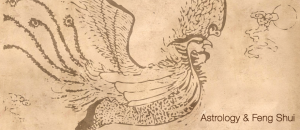To write something interesting and intriguing on Feng Shui has become a difficult task: reports and definitions with a more or less degree of accuracy are now widespread in many magazines and newspapers, and books and manuals about Feng Shui have found a place in many bookshops, even in their windows.
Popular interest in this ancient discipline concerns mostly architecture and home furnishing, which allow more professional applications, but we need to deepen our analysis into rediscovering Feng Shui.
This rapid escalation in the popularity of Feng Shui is the long wave of a phenomenon with a global reach, particularly in Anglo-Saxon countries, but a second reading through the origins can bring to an amazing view of rediscovering Feng Shui.
It is important to note that our culture keeps such an indelible mark of Cartesian rationalist philosophy as to have serious difficulties in understanding the high value and significance of ancient systems of knowledge as Feng Shui.
So Feng Shui not only regards architecture and techniques of furniture, but there is much more. To say the truth, it just eludes any precise definition: any can be good but none is exhaustive. So we need to go into depth through rediscovering Feng Shui……
Feng Shui has its origins at the dawn of Chinese civilization, when science was one thing with Knowledge and concerned the Whole.
4000 years ago human mankind used to live in a different dimension on the Earth: what we call today superstition with contempt and superiority was as a matter of fact the ability to “read” the signs which Universal Life has left for us in the microcosm where we live.
The Chinese Compass is a very complex tool which shows this ability to recognize the signs and signals that nature displays in order to teach us to adapt, modify and harmonize the environment in which Man lives. All this should be done without altering the delicate and fundamental balances that make possible Life on our Earth.
The Chinese Compass was used for the benefit of the whole community: farmers could choose the best fields and agronomic techniques, the right time for cultivation, and a profitable way to manage irrigation. Priests could choose the right site for sacred ceremonies and in particular a proper location and orientation for graves. Military strategists could identify lands with more favorable conditions for winning battles. Emperors could rule more wisely. Common men could build their homes in order to ensure a happy future for their own families.
The essentials of Feng Shui, represented superbly in the Ba Gua and in the Chinese Compass, are the fundamental space-time references, and form the basis for the understanding and teaching of this ancient system of knowledge.
But what is beyond our mind’s rational grasp is the analogic pattern of Feng Shui, which is based on an archaic but very effective way of our brains to put together thoughts and images: it is a method that works by association, rather than following the classical Aristotelian process of cause and effect.
So this ancient system of knowledge faces us with a very fascinating challenge, which seems to go much beyond the ability to change some decors. It is truly a circular path that after a long journey – by rediscovering Feng Shui – brings us back to a particular aspect of our house (and ourselves) that we were not able to repair (and to heal), and it finally shows us the true solution, the most effective one: a remedy which we can really call magical without any fear of appearing superstitious.
